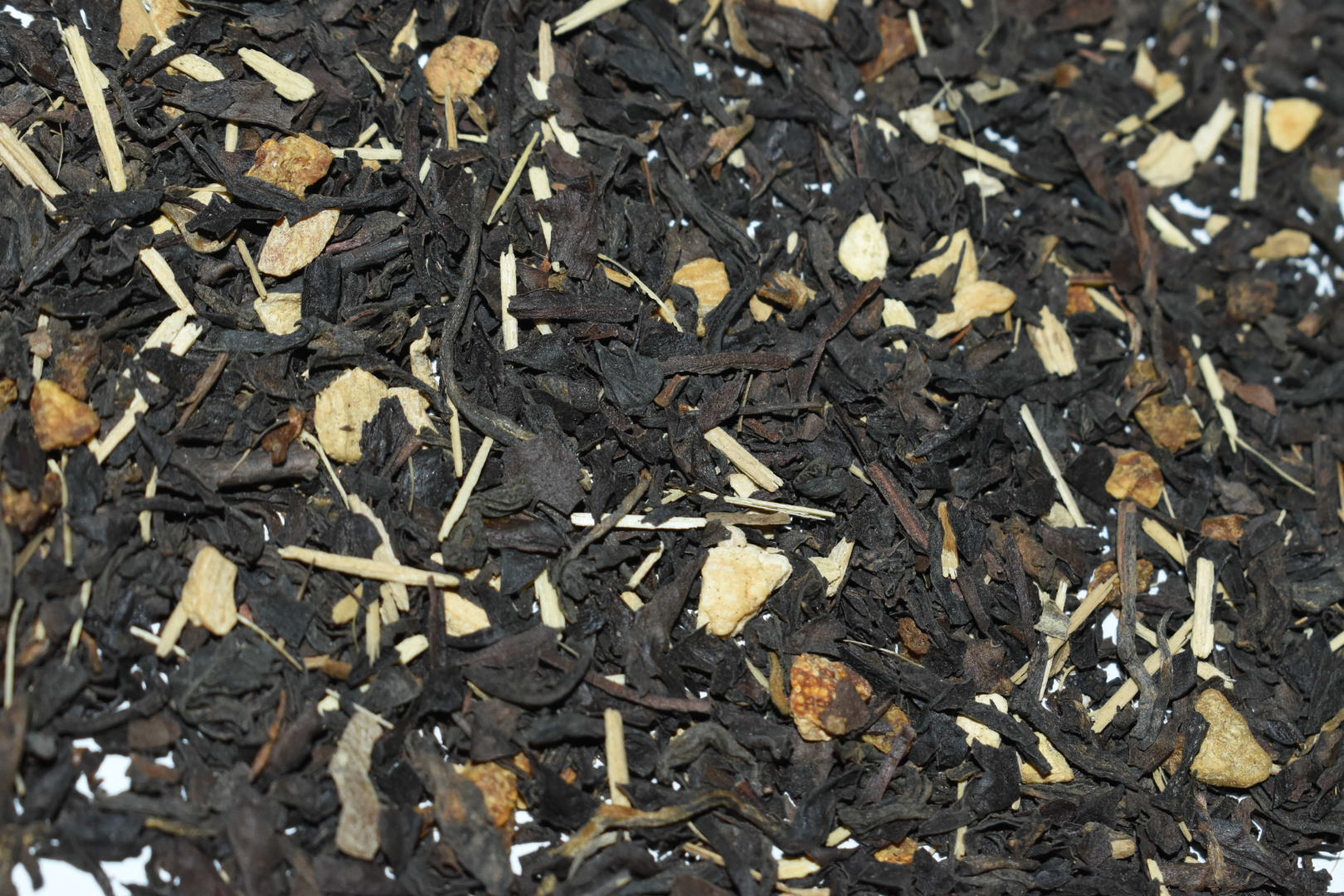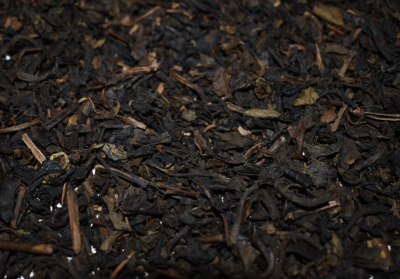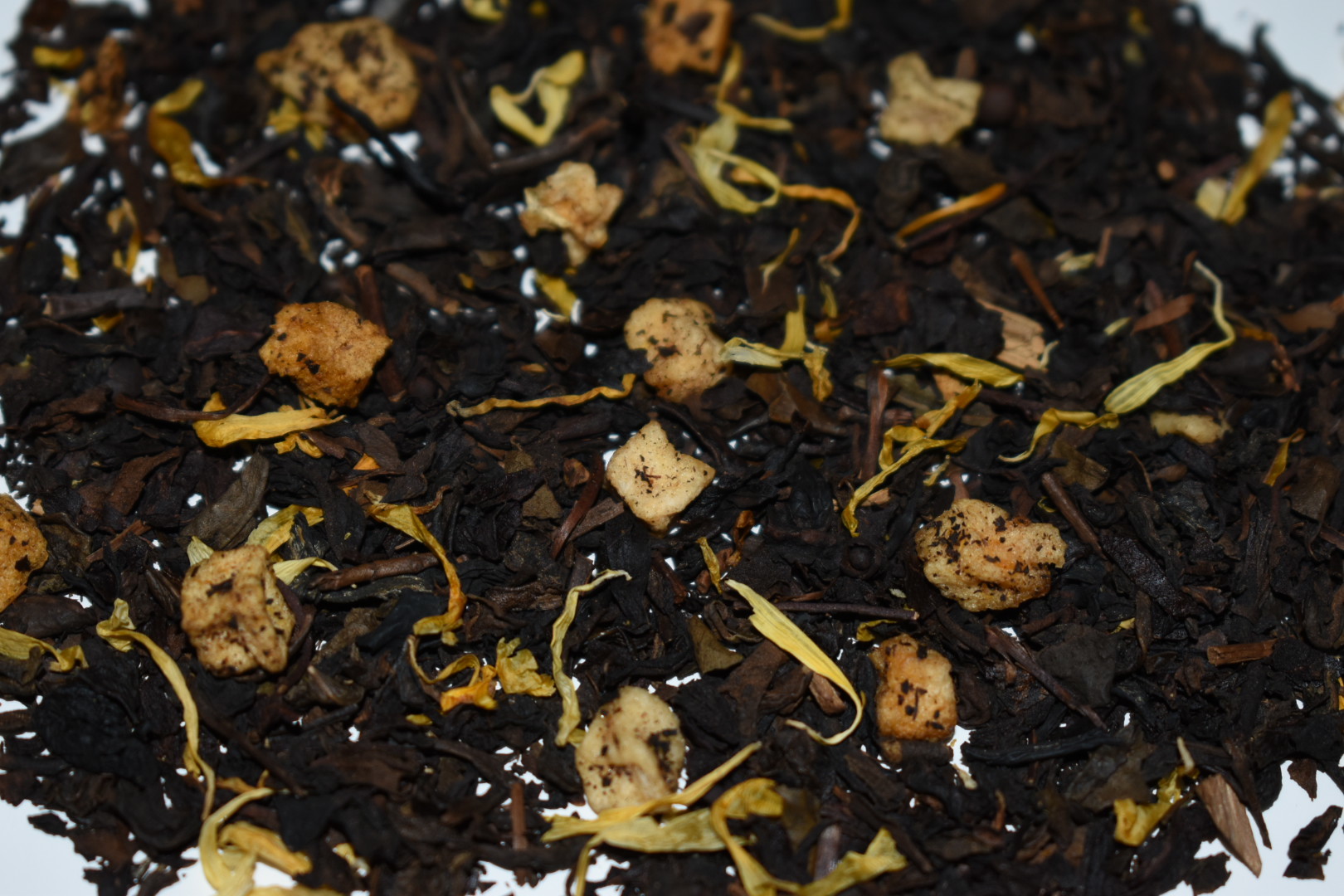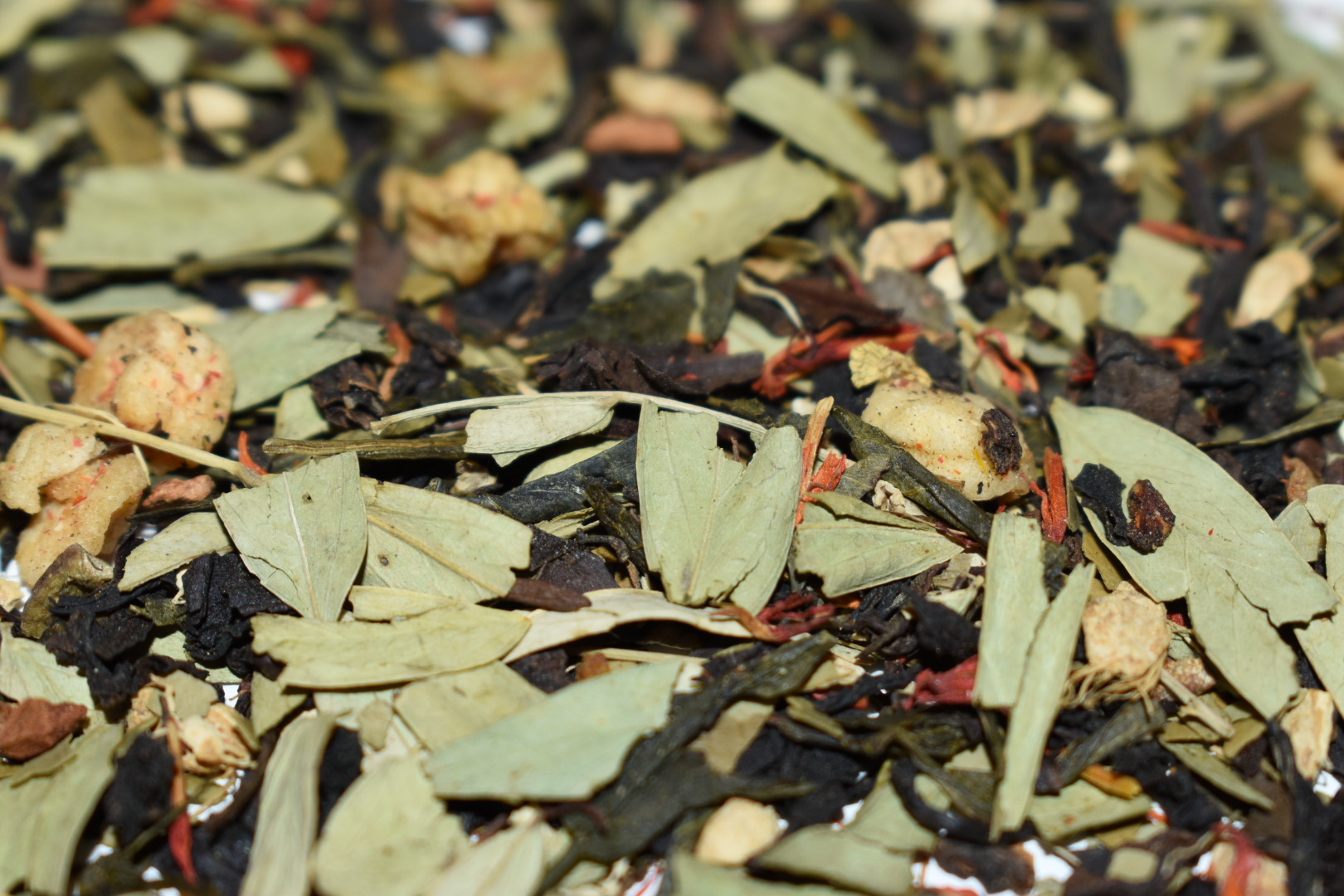Oolong Tea
~Teas & Such
Oolong Tea is one of the most time-consuming teas to create. It utilizes all of the five basic steps of oxidation, with rolling and oxidizing done repeatedly. These teas are anywhere from 8% oxidized to 80%, which can be measured roughly by looking at the amount of brown or red on the leaf while the tea is being made. The leaves are gently rolled, then allowed to rest and oxidize for a while. Then they'll be rolled again, then oxidized, over and over. Over the course of many hours, some for even days), what is created is a beautiful layering of aroma and flavor. Oolongs typically have much more complex flavor than Green or White teas. Some very smooth and soft astringency and others rich in floral or fruity flavors. Because of their smooth yet rich flavor profiles, Oolongs are ideal for those new to tea drinking.

Oolong teas actually fall between Green and Black teas on the oxidation scale. While this may seem an insignificant variable, it yields a dizzying array of tea styles and flavors. Literally translated, Oolong means "Black Dragon". There are two primary theories on how the origins of this name came about. The first is that the name is derived from the appearance of the original Oolongs grown in the WuYi Mountains. The large, twisted leaves of the WuYi Oolongs are quite oxidized and could be argued to look something like a black dragon. The second theory tells of a tea maker who was scared away from tending to his green tea by a black dragon. By the time he had returned, the leaves had partially oxidized, and so he named this new form of tea "Black Dragon."
The traditional home of Oolong is China, both in Guangdong and Fujian provinces, and Taiwan. These are the origins which set the standard for oolong production, the most time consuming and demanding to create. Other Oolongs are also being produced in small amounts now in Darjeeling, Malaysia, and Korea as well.
Oolong is a semi-oxidized tea made from large, mature leaves, which can withstand the lengthy rolling and oxidizing process. To explain, if standard tea production is the newest two leaves and a bud, oolong is often three or four leaves and a bud. After being plucked, the leaves are withered to remove some moisture. The leaves are then rolled, and that can happen in several ways - twisting, curling into tight balls, etc. After rolling, the leaves are allowed to rest and oxidize for a while. For many Oolongs, those two steps, rolling and oxidizing, are repeated several times, creating many layers of flavor and aroma.
This slow, gradual browning of the leaf is kept under control by periodic gentle heating in between steps. With green tea, we know that heat stops oxidation, but only at very high temperatures. Lower temperatures (below 130º) will just slow it down. This extended processing is also what makes oolongs so complicated to make - one batch can take several days, from harvest to packing.
Oolong teas vary greatly not only in taste, but in preparation time. Darker oolongs generally need very hot or even boiling water to get the leaves to open up and release their oils. Greener oolongs can take water just above the temperature at which green tea is brewed, around 185º or 190º. Steep time is really to your preference, Oolongs are designed to be infused multiple times, so whether you do two steepings at 4 minutes each or 10 at one minute.
For voluminous, large leaf teas, it's recommended that you use two teaspoons per cup of water. The tightly rolled, balled oolongs are about one heaping teaspoon, depending on the strength of the flavor desired. All oolongs will unfurl to be quite large leaves, so keep that in mind. They need legroom to swim around and don't yield good flavor when crammed into a tiny infuser or tea ball.
A number of companies have gone to great lengths in recent years to market Oolong teas under the names Wulong or Wu-Long as weight loss teas. There is no scientific evidence to suggest that Oolong teas are any more effective than other teas in aiding weight loss. ALL teas have the same health benefits.
Top
Back





